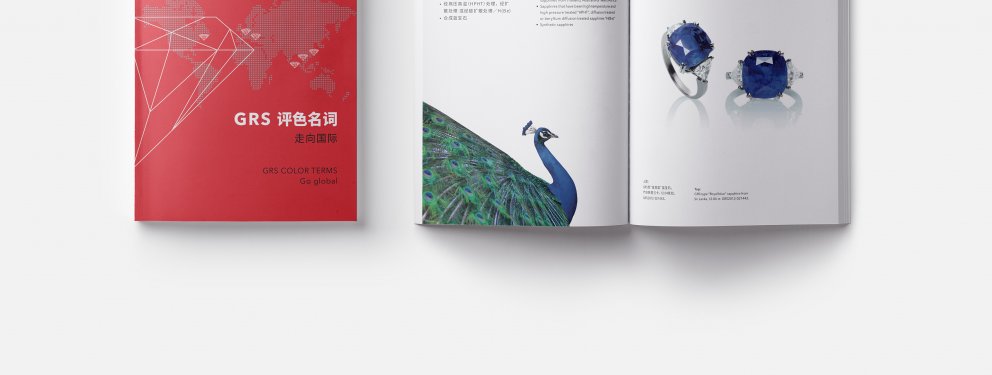GRS Appendix Types
Certain elements and findings on a GRS report require more detailed explanations. For those cases, GRS will issue a separate appendix in addition to the main report. Below an overview of some of the most common appendices currently in use.
Color Stability Types
Comment on main report: Color stability test applied: Type 1
Comment on appendix: The GRS color stability test was applied. No indication of fading was observed (GRS-type “CST 1”). Post-testing exposure to UV- or sunlight will not increase the color saturation and/or cause a change in hue.
Comment on main report: Color stability test applied: Type 2
Comment on appendix: The GRS color stability test was applied. Indication of orange and/or yellow component fading was observed (GRS-type “CST 2”). Post-testing decrease of color saturation and/or change of hue is possible.
Comment on main report: Color stability test applied: Type 3a
Comment on appendix: The GRS color stability test was applied. A padparadscha (or vivid yellow or orange) color is visible in both the discharged and charged state (GRS-type “CST 3a”). Post-testing increase of color saturation and/or change of hue by exposure to UV- or sunlight is possible.
Comment on main report: Color stability test applied: Type 3b
Comment on appendix: The GRS color stability test was applied. No padparadscha (or vivid yellow or orange) color is visible in the discharged state (GRS-type “CST 3b”). Post-testing increase of color saturation and/or change of hue by exposure to UV- or sunlight is possible.
Comment on main report: Color stability test applied: Type 4
Comment on appendix: The GRS color stability test was applied. Indication of fading was observed (GRS-type “CST 4”). Post-testing increase of color saturation and/or change of hue by exposure to UV- or sunlight is not possible.
Potentially applies to: Padparadscha Sapphires, Yellow Sapphires, Orange Sapphires (heated and unheated)
GRS Brilliancy-type "Vibrant"
Comment on main report: color (GRS brilliancy-type "vibrant")
Comment on appendix: GRS Laboratories examined an 8.88 ct
natural emerald, described in report number X, that exhibited very
good brilliancy and ideal proportions, making it worthy of receiving the GRS
brilliancy designation of “vibrant”.
“Vibrant” is an attribute given to
gemstones that display a high amount of color reflection – as opposed to the
separately considered category of color saturation.
A “vibrant” appearance is achieved through the skillful cutting of a gemstone to its optimal proportions, resulting in greater-than-usual weight loss and a maximized reflection pattern.
Potentially applies to: all gemstones
Old Mine/ Muzo Appendix
Comment on main report: vivid green* (special comment see appendix)
Comment on appendix: This vividly saturated emerald of 8.88 ct
is reminiscent in hue of the varieties displaying the legendary colors found in
the world-renowned Muzo mines. They are formally described as “Muzo Green” (*)
and commonly known in the trade as “Old Mine” emeralds.
This appendix indicates the specific quality and color for emeralds from various Colombian mines; however, it does not specify from which particular mine they were found.
Potentially applies to: Colombian emeralds
GRS-type "Mariposa"
Comment on main report: special comment see appendix
Comment on appendix: This particular emerald displays an
additional microscopic velvety appearance caused by a rare growth phenomenon
described in the literature as "butterfly-wing effect".
These stones are given the designation GRS-type "Mariposa", referring to the Spanish word for butterfly.
Potentially applies to: Emeralds that show the growth phenomenon referred to as "butterfly-wing effect".
Reminiscent of GRS-type "Pigeon's Blood"
Comment on main report: vivid red* (special comment see appendix)
Comment on appendix: This vivid red Mozambique ruby is reminiscent in color saturation of "GRS-type pigeon blood ruby" (without strong fluorescence).
Potentially applies to: all rubies with low to medium fluorescence (e.g. from origins such as Madagascar, Mozambique, Tanzania)
More information on GRS-type color terms:

© 2023, GRS GemResearch Swisslab AG
